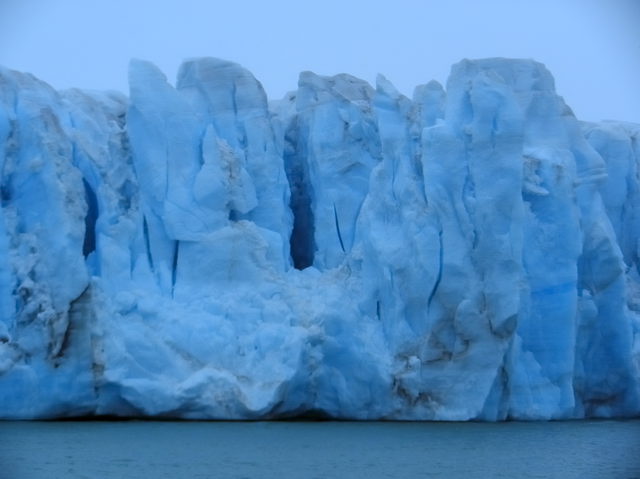The ice-front along the Southern end of Nordaustlandet is the longest in the Northern Hemisphere. We approached the start of the ice-front and explored the area for a while before heading East to Kvitoya Island.
The Sun made an appearance through the clouds.

The jumbled mass of ice forms crevasses which split into deep chasms. Red algae grow on the ice, an indication to the warmer temperatures here in recent years.


As the light changes, so does the colour of the ice, becoming darker blue and turquoise.


Blocks of ice that calve from these glacier fronts roll and break up in the sea with wind and wave action forming unique shapes and patterns.


We headed for Kvitoya, but would return later to travel the length of the ice-front, so there is more to come on this.
Ashore on the island, we found two dead bears. One old carcass, one relatively fresh. The bears get stuck on the islands when the ice breaks up too early in the season and as there is little food available, they starve. Not a nice thing to see, but I include them here to highlight the cost of climate change to these animals that we rarely see.
The size of the paw is evident in this pic.

And the claws are powerful tools.

The skull of the bear showing the canine teeth.

Earlier in the landing here we all went up to the site where the ill fated Andreé balloon expedition had finally made it back to land after crashing on the ice further North. They died here and it was 33 years before anyone found their remains and discovered what had happened to them.
We took the opportunity here for a group photo.

Me Hans Benedict Per Tytti Eric
Christina Tine
Sigmund Hetty Lennart Mats
Jurgen
 -O
-O









